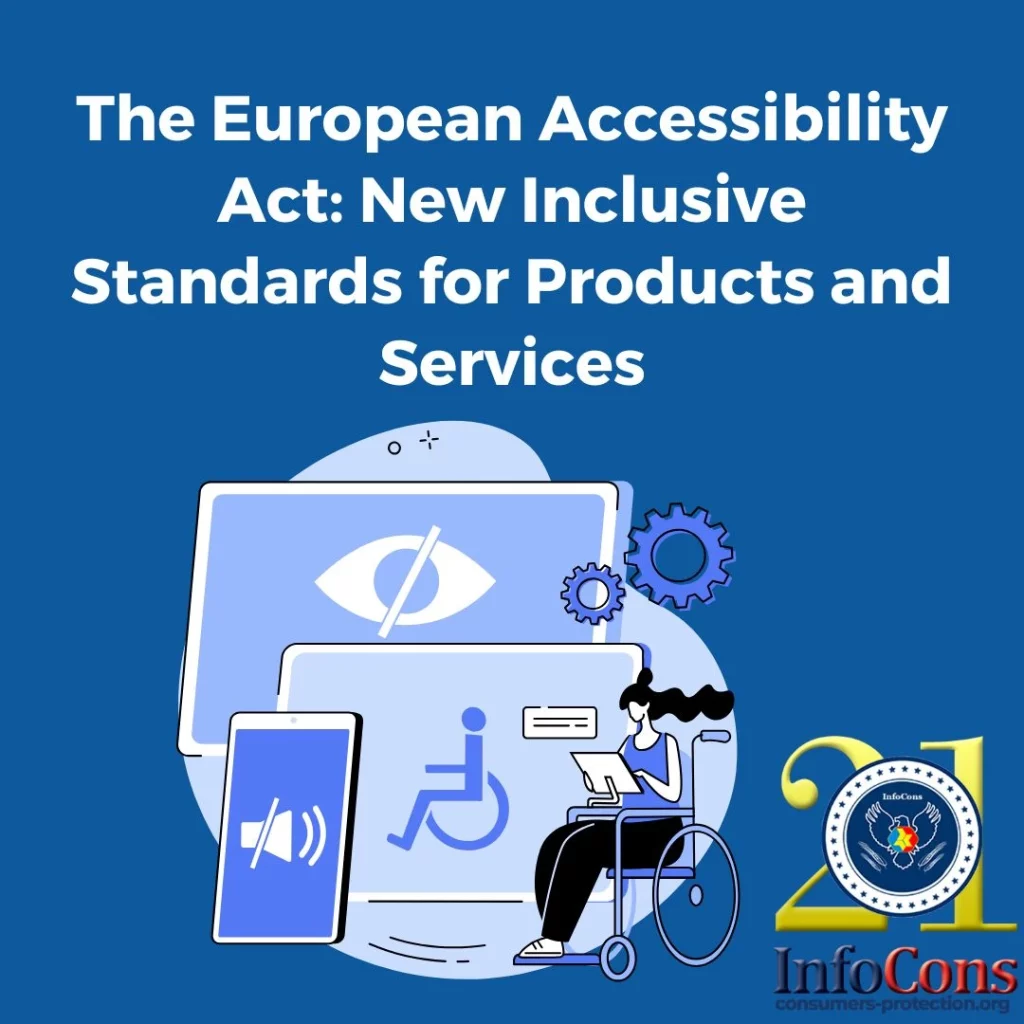
The European Accessibility Act (EAA) represents a significant milestone in fostering inclusivity and accessibility across the European Union. Set to take full effect on June 28, 2025, the directive aims to create a unified market for accessible products and services while breaking down barriers for millions of Europeans with disabilities, impairments, and the elderly. By establishing minimum accessibility requirements, the EAA seeks to benefit not only individuals but also businesses and society at large.
Simplifying Accessibility Rules for Businesses
The EAA introduces uniform accessibility regulations, reducing the complexity and cost of compliance for companies operating in multiple EU countries. Key benefits for businesses include:
- Cost Reductions: Standardized rules eliminate the need for adapting products and services to varying national standards.
- Cross-Border Opportunities: Companies can more easily trade accessible products and services across the EU.
- Increased Market Demand: Accessibility expertise will drive innovation and create new opportunities in emerging markets.
Read also : Intellectual Property Challenges in the Digital Age : Online Copyright Infringement in the EU
Enhanced Access for Individuals
For individuals with disabilities and elderly populations, the EAA promises transformative improvements:
- Wider Accessibility: A broader range of accessible products and services will be available.
- Affordability: Competition is expected to lower prices for accessible offerings.
- Fewer Barriers: Accessibility will enhance transport, education, and labor market opportunities.
- Job Growth: The demand for accessibility specialists will rise as businesses strive for compliance.
Products and Services Covered: What Falls Under the EAA?
The EAA focuses on products and services that are both vital for individuals with disabilities and prone to inconsistent accessibility standards across member states. These include:
- Computers, operating systems, and smartphones
- ATMs, ticketing, and check-in machines
- TV equipment and audio-visual media services
- Telephony services and related equipment
- Banking services
- E-books and e-commerce platforms
- Services related to air, bus, rail, and waterborne passenger transport
The directive aligns with the UN Convention on the Rights of Persons with Disabilities, reflecting a strong commitment to global standards.
Read also : The Role of Consumer Empowerment in Achieving a Green Transition
Who Needs to Comply ?
Unlike previous legislation, the EAA places significant emphasis on private sector firms. Compliance applies to:
- Businesses with 10+ employees or annual turnover exceeding €2 million.
- Any business trading in the EU, regardless of headquarters location.
Even non-EU companies must adhere to the Act if they sell relevant goods or services within the European Union.
Implementation : A Shared Responsibility
Implementation of the EAA will vary by country, as each EU member state must establish its own regulations, designate responsible authorities, and outline penalties for non-compliance. While some nations have started this process, all must complete it by June 2025 to ensure readiness.
Consequences of Non-Compliance
Businesses failing to comply with the EAA face serious repercussions, including:
- Fines and Penalties: Regulatory authorities can impose financial sanctions based on the size and nature of violations.
- Legal Action: Advocacy groups or individuals may initiate lawsuits to address accessibility failures.
- Reputational Damage: Negative publicity can erode consumer trust and brand value.
- Loss of Customers: Inaccessible products alienate potential customers, limiting market reach.
- Procurement Exclusion: Non-compliant companies may be barred from public and private procurement opportunities.
- Operational Costs: Retrofitting products or services to meet accessibility standards can be both disruptive and expensive.
Read also : Emerging Scam Trends to Watch Out for in 2025
Preparing for 2025 : Steps for Businesses
With the deadline fast approaching, businesses should take proactive measures to ensure compliance:
- Engage Legal Teams: Assess how the EAA applies to your operations.
- Evaluate Accessibility: Audit existing products and services for compliance gaps.
- Develop a Compliance Plan: Prioritize critical changes and create a roadmap for implementation.
- Update Accessibility Statements: Document plans and share progress with stakeholders.
- Adapt Future Processes: Ensure all new products and services launched post-June 2025 are EAA-compliant.
Paving the Way for an Inclusive Future
The European Accessibility Act is a powerful step toward a more inclusive society, benefiting millions of individuals while encouraging businesses to innovate and grow. By fostering accessibility, the EAA underscores the importance of removing barriers and ensuring equal opportunities for all. As 2025 approaches, businesses have a unique opportunity to lead the way in shaping a more equitable market and reaping the rewards of accessibility-driven innovation.
Source : consilium.europa.eu
InfoCons – European Organization for Consumer Protection and Promotion of Programs and Strategies , a full member of the World Organization Consumers International, founding member of the Federation of Consumer Associations, and member of ANEC .